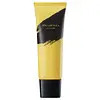What's inside
What's inside
 Key Ingredients
Key Ingredients

 Benefits
Benefits

 Concerns
Concerns

 Ingredients Side-by-side
Ingredients Side-by-side

Water
Skin ConditioningSodium Cocoyl Glycinate
CleansingCoco-Betaine
CleansingGlycerin
HumectantAcrylates Copolymer
Sodium Chloride
MaskingPhenoxyethanol
PreservativeSodium Benzoate
MaskingHydroxyacetophenone
AntioxidantButylene Glycol
HumectantCI 77891
Cosmetic ColorantSodium Hydroxide
BufferingSalicylic Acid
MaskingAluminum Hydroxide
EmollientCitrus Junos Fruit Extract
Skin ConditioningSilica
AbrasivePelargonium Graveolens Flower Oil
MaskingLavandula Hybrida Oil
EmollientCymbopogon Schoenanthus Oil
MaskingOriganum Majorana Leaf Oil
MaskingZingiber Officinale Root Oil
MaskingCupressus Sempervirens Leaf/Nut/Stem Oil
EmollientCitrus Limon Peel Oil
MaskingCitrus Nobilis Peel Oil
MaskingMentha Piperita Oil
MaskingParfum
MaskingCeramide AP
Skin ConditioningWater, Sodium Cocoyl Glycinate, Coco-Betaine, Glycerin, Acrylates Copolymer, Sodium Chloride, Phenoxyethanol, Sodium Benzoate, Hydroxyacetophenone, Butylene Glycol, CI 77891, Sodium Hydroxide, Salicylic Acid, Aluminum Hydroxide, Citrus Junos Fruit Extract, Silica, Pelargonium Graveolens Flower Oil, Lavandula Hybrida Oil, Cymbopogon Schoenanthus Oil, Origanum Majorana Leaf Oil, Zingiber Officinale Root Oil, Cupressus Sempervirens Leaf/Nut/Stem Oil, Citrus Limon Peel Oil, Citrus Nobilis Peel Oil, Mentha Piperita Oil, Parfum, Ceramide AP
Water
Skin ConditioningButylene Glycol
HumectantSodium Lactate
BufferingSalicylic Acid
MaskingGlycolic Acid
BufferingLactic Acid
BufferingCitric Acid
BufferingMalic Acid
BufferingTartaric Acid
BufferingNiacinamide
SmoothingSalix Nigra Bark Extract
Skin ProtectingPyrus Malus Fruit Extract
Skin ConditioningPanthenol
Skin ConditioningAllantoin
Skin ConditioningSodium Benzoate
MaskingPotassium Sorbate
PreservativeIngredients Explained
These ingredients are found in both products.
Ingredients higher up in an ingredient list are typically present in a larger amount.
Butylene Glycol (or BG) is used within cosmetic products for a few different reasons:
Overall, Butylene Glycol is a safe and well-rounded ingredient that works well with other ingredients.
Though this ingredient works well with most skin types, some people with sensitive skin may experience a reaction such as allergic rashes, closed comedones, or itchiness.
Learn more about Butylene GlycolSalicylic Acid (also known as beta hydroxy acid or BHA) is a well-known ingredient for treating skin that struggles with acne and clogged pores. It exfoliates both the skin's surface and deep within the pores to help clear out buildup, control oil, and reduce inflammation.
Unlike AHAs (alpha hydroxy acids), salicylic acid is oil-soluble. This allows it to penetrate into pores which makes it especially effective for treating blackheads and preventing future breakouts.
Salicylic acid is also known for its soothing properties. It has a similar structure to aspirin and can calm inflamed or irritated skin, making it a good option for acne-prone skin that is also sensitive.
Concentrations of 0.5-2% are recognized by the U.S. FDA as an over-the-counter topical acne product.
It can cause irritation and/or dryness if one's skin already has a compromised moisture barrier, so it's best to focus on repairing that before introducing this ingredient into your routine.
While salicylic acid does not increase sun sensitivity, it’s still important to wear sunscreen daily to protect your skin.
If you are looking for the ingredient called BHA or Butylated Hydroxyanisole, click here.
Learn more about Salicylic AcidSodium Benzoate is a preservative. It's used in both cosmetic and food products to inhibit the growth of mold and bacteria. It is typically produced synthetically.
Both the US FDA and EU Health Committee have approved the use of sodium benzoate. In the US, levels of 0.1% (of the total product) are allowed.
Sodium benzoate works as a preservative by inhibiting the growth of bacteria inside of cells. It prevents the cell from fermenting a type of sugar using an enzyme called phosphofructokinase.
It is the salt of benzoic acid. Foods containing sodium benzoate include soda, salad dressings, condiments, fruit juices, wines, and snack foods.
Studies for using ascorbic acid and sodium benzoate in cosmetics are lacking, especially in skincare routines with multiple steps.
We always recommend speaking with a professional, such as a dermatologist, if you have any concerns.
Learn more about Sodium BenzoateWater. It's the most common cosmetic ingredient of all. You'll usually see it at the top of ingredient lists, meaning that it makes up the largest part of the product.
So why is it so popular? Water most often acts as a solvent - this means that it helps dissolve other ingredients into the formulation.
You'll also recognize water as that liquid we all need to stay alive. If you see this, drink a glass of water. Stay hydrated!
Learn more about Water